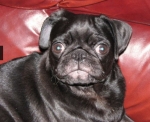Actually the absence of clear cut evidence for something doesn't mean it isn't there.lars_the_bear wrote: ↑Sat Dec 25, 2021 10:59 amthere doesn't seem to be clear evidence of OSA, or any ordinary type of sleep apnoea. Is that how it looks to you as well?
Remember that this is a TREATED with pressure report. It just means that with the pressures you don't have OSA.
My AHI last night was 0.7....all that means is with my machine being used I didn't have much OSA events happen...it doesn't tell me how many it prevented. It just tells me how many didn't get prevented.
So I wouldn't make that assumption one way or the other.
If you didn't have the other known respiratory issues complicating evaluations....the marked change in pressure the last half of the night does point to a high probability of OSA at some level being present.
If you didn't have some level of OSA I would expect the pressure to never really do much of anything.
Is your other issue with breathing and O2 levels while awake confusing the machine???? Wouldn't be impossible.
So is the pressure increase from OSA leaning breathing from OSA or from something else that the machine thinks is OSA related??? Million dollar question that we simply can't answer with the data available to us. Remember the machine only measures air flow...that's all it can measure.
Your little snippet showing the sort of waxing and waning of the air flow....actually it's entirely normal to see that sort of graph. Sometimes it is arousal related...sometimes it's positional...sometimes it's sleep stage related...sometimes it just is what it is. We simply don't breathe the same all night and we don't sleep the same all night.
Might be interesting to see what happens with your O2 levels while on cpap if we can. Again...what kind of overnight pulse oximeters do you have available?
I do think that eventually you are likely going to be needing an in lab overnight sleep study because you are just going to have questions that we aren't going to have answers to from the data available to you from the machine.
The machine was never supposed to be a diagnostic tool anyway and it was never supposed to have the data put under the microscope this way. The data is mainly for monitoring trends and patterns during the OSA treatment.
I gotta run and will be gone the rest of the day. Going over to my mom's.










